Lactobacillus Serum, also known as LAB Serum, is the workhouse of beneficial bacteria. Learn how to make it at home for use in home, garden, farm and more.
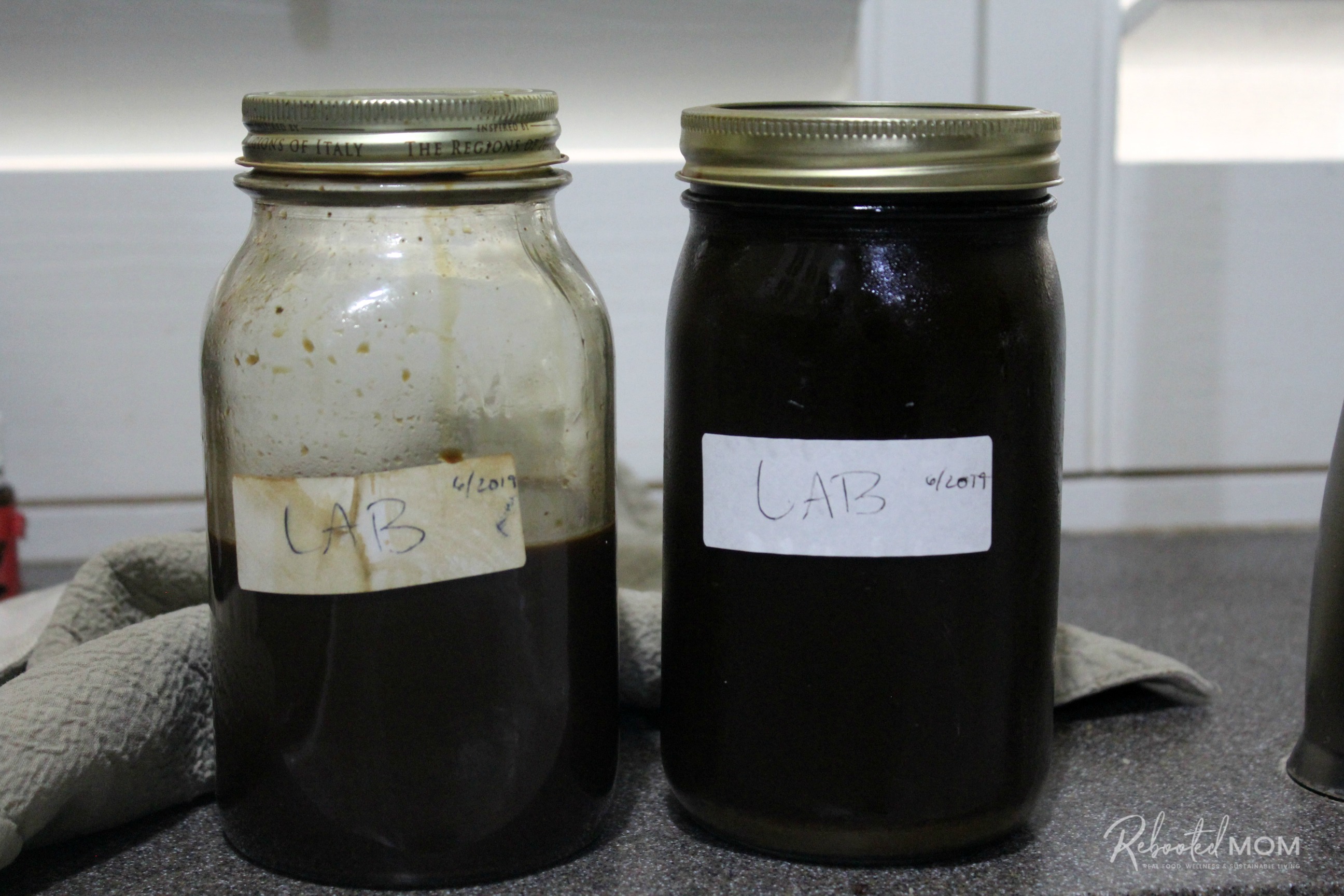
Lactobacillus Serum, also known as LAB Serum, is incredibly easy to make at home. With a few simple ingredients and time you can have a powerful tool for your home, garden and farm.
Lactobacillus is the workhorse of beneficial bacteria that can be used for a variety of applications. Use it to clean a clogged drain, rid smells and control orders, enrich your garden and aid in chicken/pig/beef farming. Once made, it can be diluted accordingly for use in home or garden.
How to Make Lactobacillus Serum (LAB)
To make LAB, you’ll want to collect bacteria from the air using water that has been used to rinse rice.
Any rice can be used to make LAB serum. I used organic jasmine rice but you could use brown rice too. Put your rice in a pot with warm water, mix the rice around and then drain the water into a quart-size canning jar.
That “rice wash” water is now rich in carbohydrates (you can’t see it, but it is). That liquid will attract microbes from the air – one of them lactobacillus. Cover the jar with a piece of cotton fabric or cheesecloth to allow it breathing room.
Push to the rear of your kitchen counter, in a dark closet or outside on the back porch anywhere from a couple days to a week.
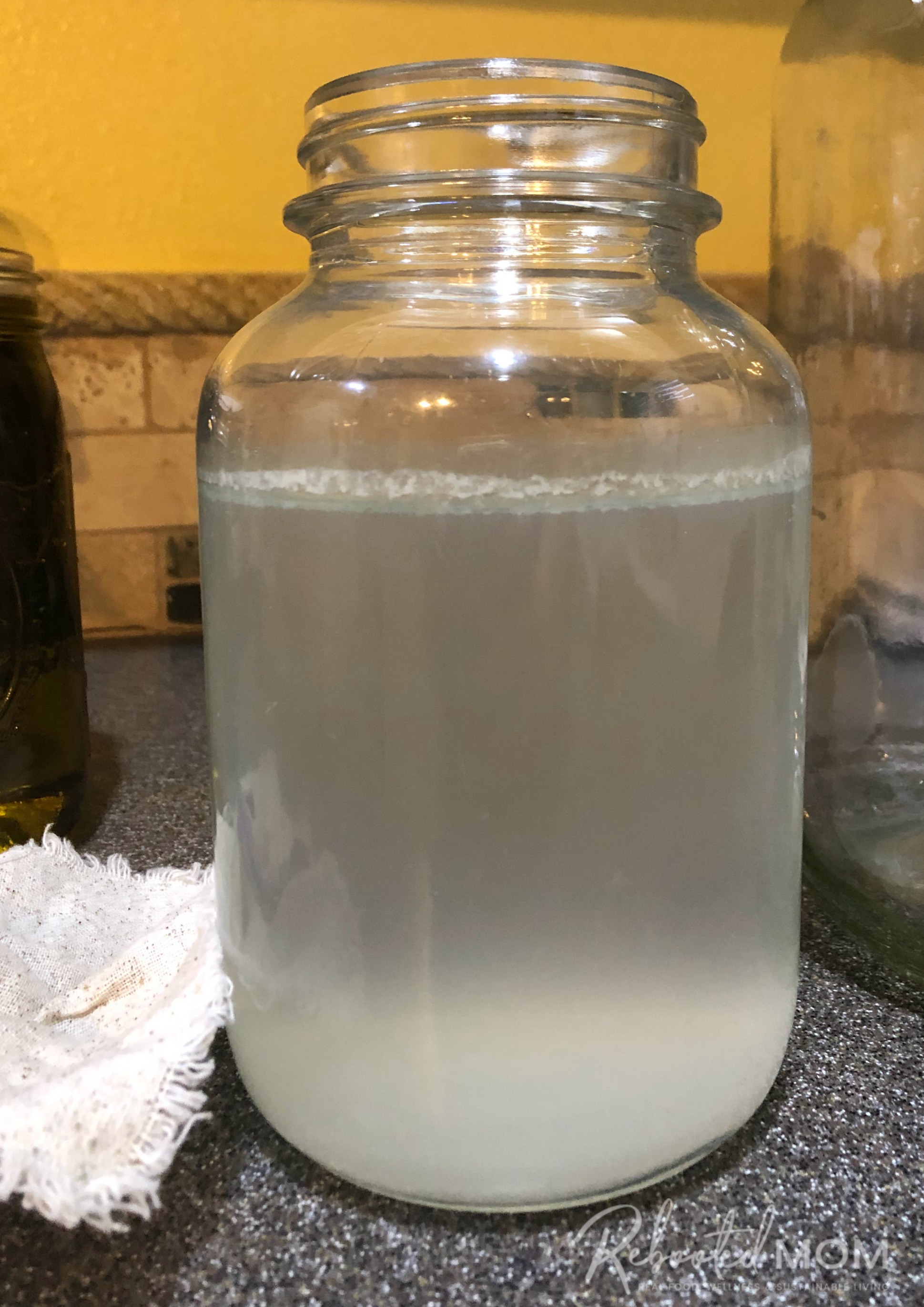
When is it ready?
After one week (or 5 days if you are in a warmer climate), the rice wash will have a light layer on the top and smell a little sour. When it’s done, you’ll see three layers:
- Top Layer: Floating carbs left from the fermentation
- Middle Layer: Lactic acid + other bacteria (which is what we are going to use to make this LAB serum)
- Bottom Layer: Starches – which are a byproduct of fermentation, we’ll discard this
Use a siphon (a turkey baster works well) to siphon 1 C. of the middle layer out and into a clean, gallon-size glass jar. This layer has the highest concentration of lactic acid bacteria.
Mix that single cup of rice wash with 10 parts (cups) milk. Adding lactose to the wash will prevent other microbes from proliferating – leaving only lactobacillus.
(Note: the best milk to use is raw, unpasteurized milk. However, if you are in an area that you cannot obtain raw milk, then use whatever is available as long as it has lactose.)
Combine with Milk
Mix the rice wash with the milk, then push the container to the rear of the counter, or put it back in a dark closet/pantry. Keep the mixture as anaerobic as possible. Use a fermenting lid or keep the container sealed. If you keep a lid on the container you’ll want to loosen it each day to burp the LAB as it grows.
The container must also not be completely filled or it might bubble through the valve. Allow the mixture to sit for at least 7 days. You will see it transform during that time.
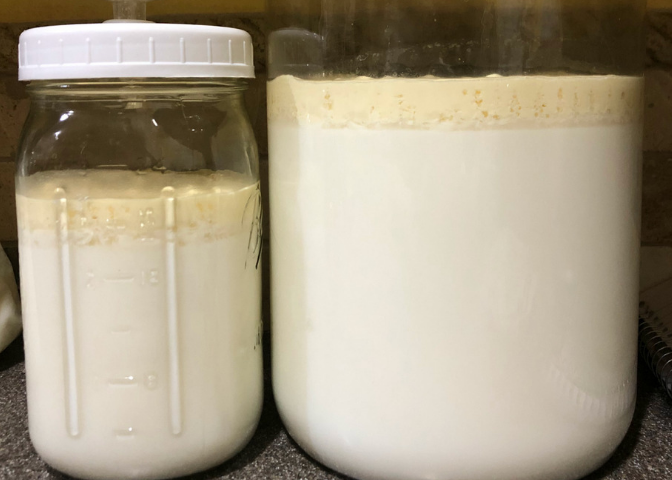
Rice wash + raw milk = day 2 of a 7-day ferment
First, it will start off as a milky mixture. Then, the milk will start to curdle as it enriches with the lactic acid from milk fermentation.
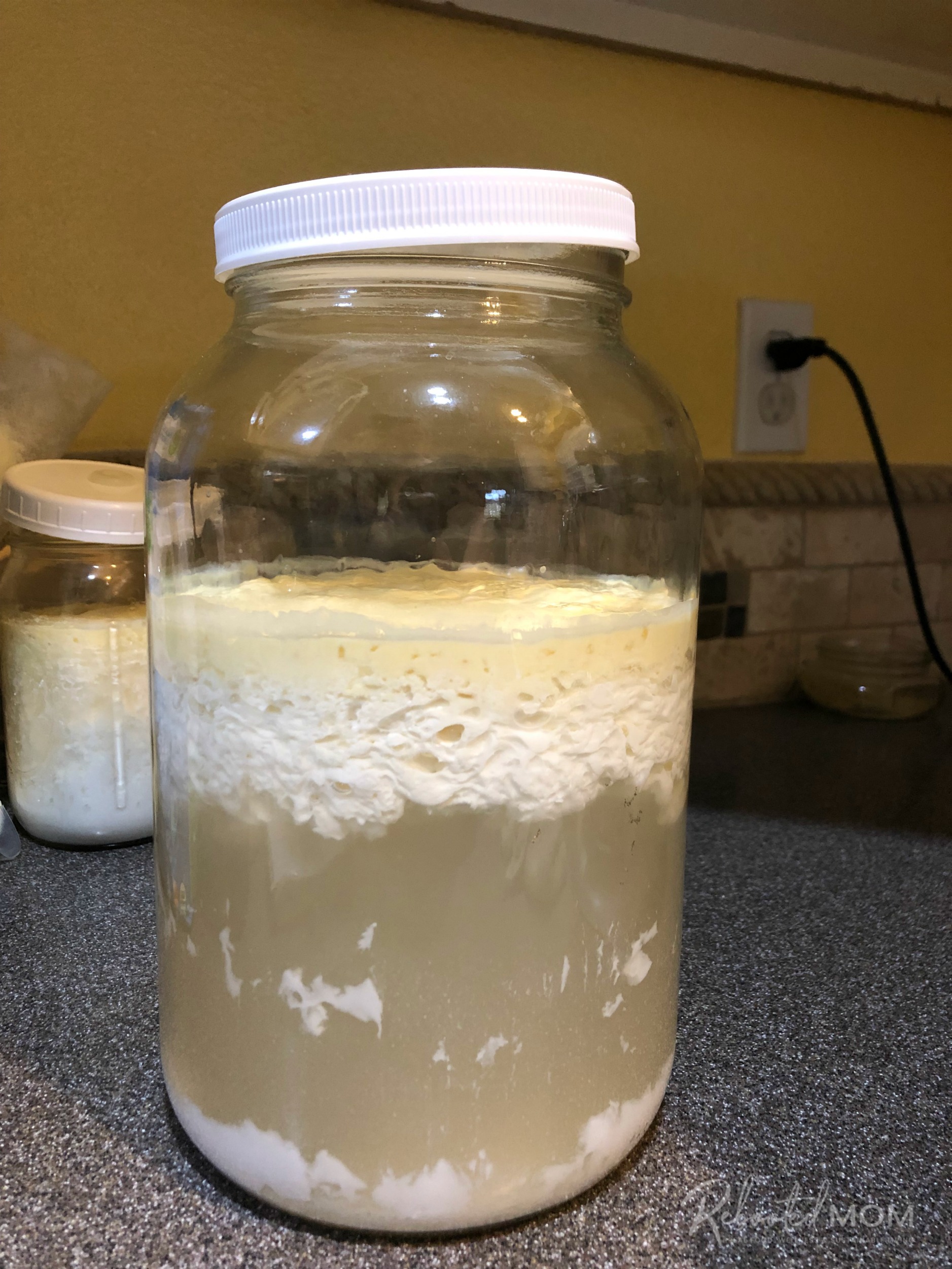
Lactobacillus Serum after 7 days
After 7-10 days, the mixture will separate into two layers. The layer on top is a thick mass of curds — an excellent food that can be enjoyed as cheese (yes, by you!) It’s enriched with microbes and nutrients.
Feed it to your compost pile, animals or wrap in cheesecloth to dry out for a few days. Then enjoy with a little salt.
Extracting the Whey
Once you have two distinct layers, your goal is to grab the yellow-colored whey. Lift out the top layer from the jar, and set aside. Then run the yellowish layer of serum (whey) through a cheesecloth into a clean jar. That whey can be kept in the fridge for up to 2 weeks.
To preserve the serum for a longer period of time, add an equal amount of blackstrap molasses or brown sugar, and stir well. Store at room temperature for up to 12 months.
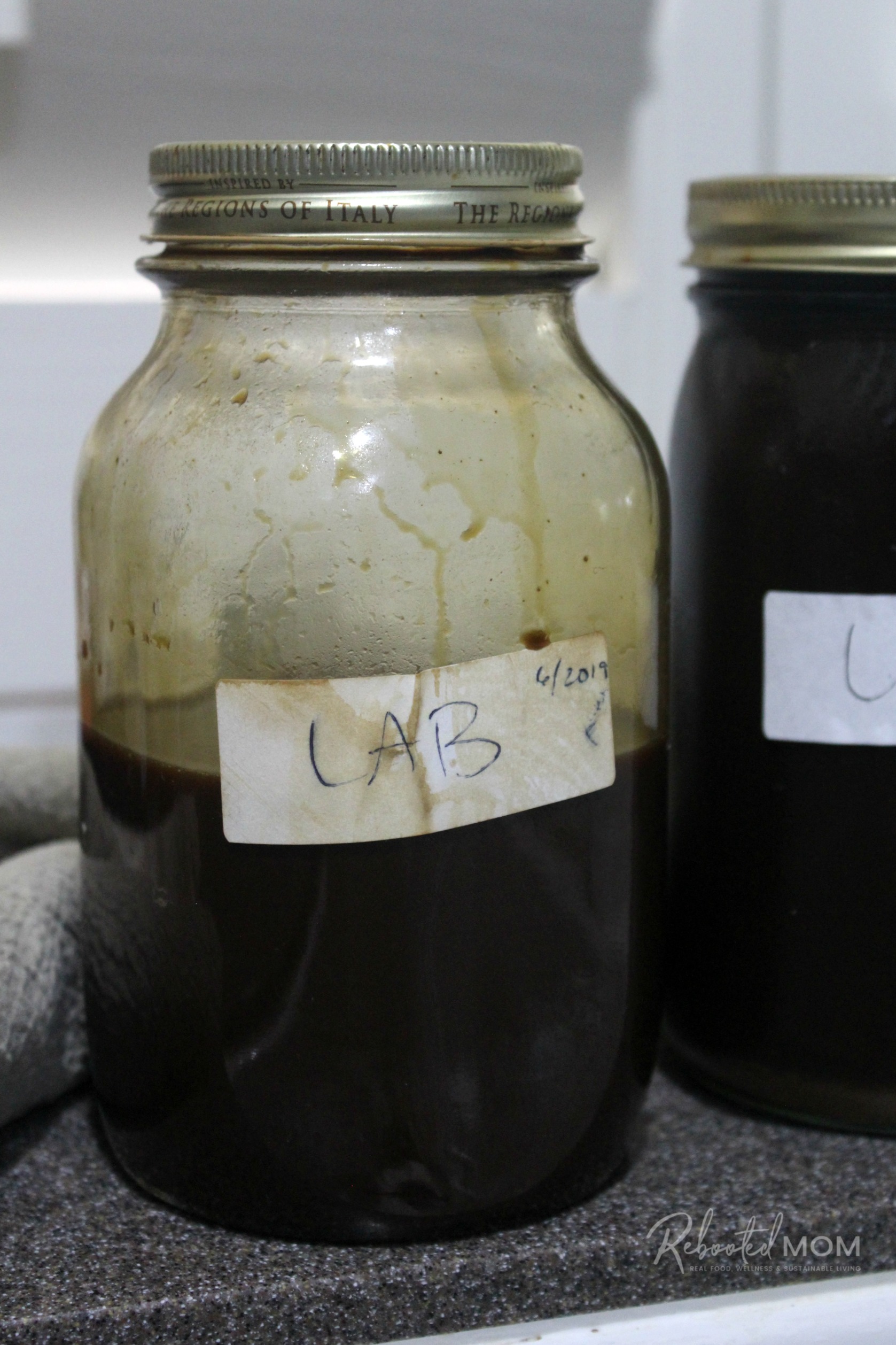
Strained LAB Serum fed with equal parts of molasses
Feed and Dilute your LAB Serum
LAB Serum (also known as Lactobacillus Serum) can be used for home, garden and even agricultural use. By feeding your LAB molasses or brown sugar (from the previous step), you will have it ready whenever you need it.
Before using LAB for home, garden, agricultural or personal use, you will want to dilute the mixture.
Dilution ration: 1/500 ~ or 2 Tablespoons per gallon (128 oz), or higher concentrations for odor control.
Using Lactobacillus Serum for Home, Garden or Agriculture
Odor Reducer: Once diluted, apply in areas that need greater odor control or a reduction of odors – animal pens, dog crates, kennels or litter box trays.
Garden Use: 2 Tbsp per gallon of water and used every 3-4 weeks as a soil drench. Or used topically as a foliar spray. By using as a soil drench, you are helping to increase the efficiency of nutrients to the plant.
Home Use: Clean clogged drains by pouring the diluted mixture down a struggling drain. If possible, allow the mixture to sit in the drain overnight to work for several hours.
Farm Use: Once diluted, spray animal bedding to prevent/reduce odor and illness. Moisten, but do not over-saturate bedding. Dry climates may require a greater saturation than humid climates, just make sure you mix well to distribute evenly.
Animals: LAB can be used to aid in digestion. Microorganisms in LAB help digest food, therefore better absorption of nutrients and resistance to disease. LAB helps to prevent harmful bacteria in food/water that animals consume. At the same time it greatly enhances their intestinal gut flora. Add just enough to be effective – once the LAB is diluted (as noted above) soak the feed in the solution for several days.
By allowing the feed to soak, the food is literally pre-digested when it gets to the animals.
Humans: mix 1-2 teaspoons with one cup of cool water to re-establish proper gut health and promote internal healing.
LAB Serum can also be used in bokashi composting, fish farming and more. Once the serum is done fermenting, you will want to feed it with equal parts molasses or brown sugar. Then store in a cool, dark area.
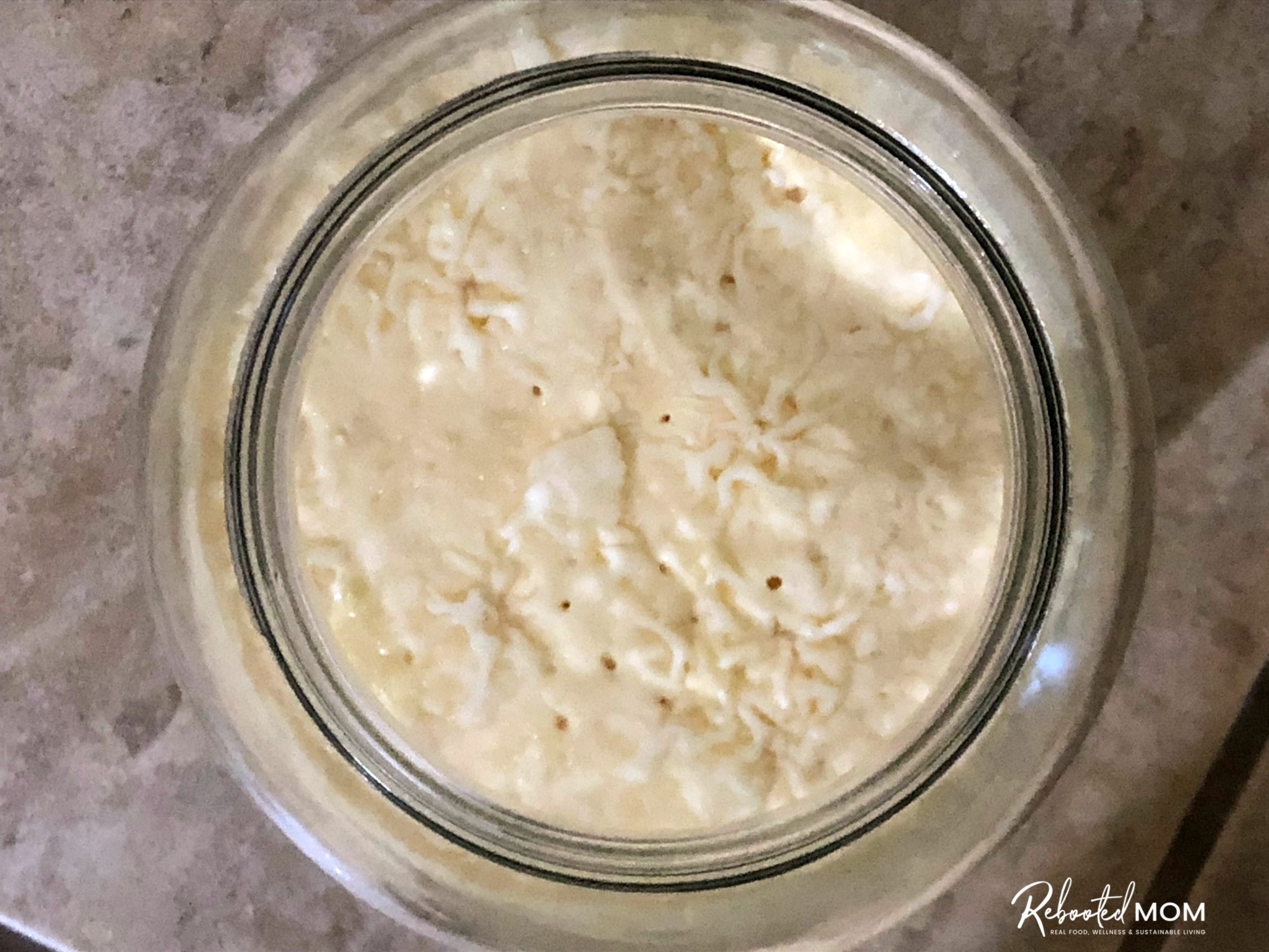
What do I do with the curd?
Don’t toss the curd! Keep the curd – if you aren’t interested in wrapping up to dry out a bit, then use in your compost. Or you can also feed to your animals. The top layer of curd is rich in probiotics and nutrients that are wonderful for digestive health.
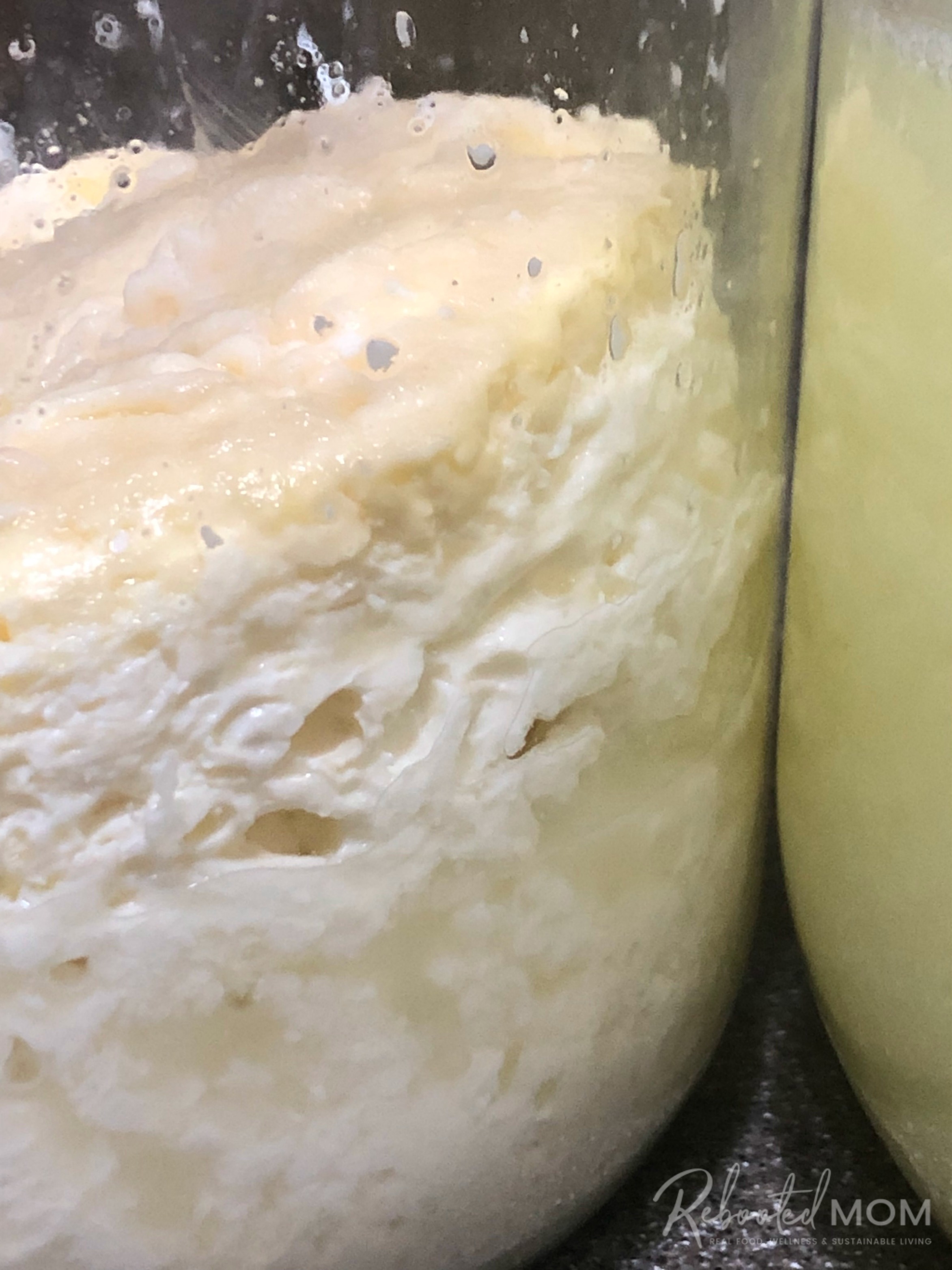
Simply keep the curd tucked away in a separate jar so you have it ready when you determine what you would like to use it for.
Things to Consider
LAB Serum, once made, is best kept in a 5-gallon bucket that has been modified with a spigot. If you are in a moderate climate, the serum can be kept in your garage or garden area provided you have fed the whey with equal amounts of molasses or brown sugar.
Those sugars will give the serum something to feed on over time. The bucket with a spigot is an easier way to add a small amount to a spray bottle to dilute with water for use as a foliar spray. Or use a higher ratio of LAB when diluting to spray areas that need more help (ie. odor control).
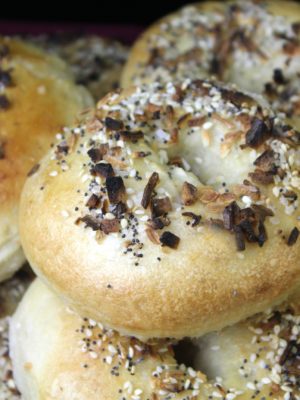
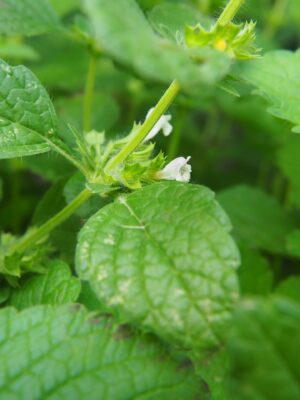
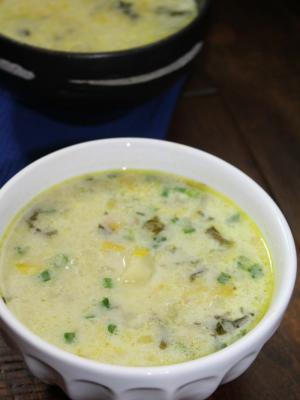
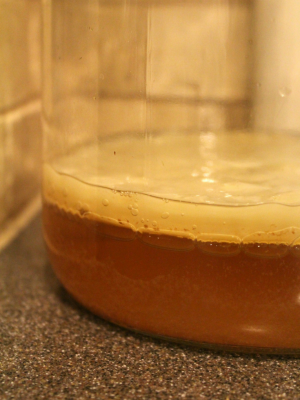
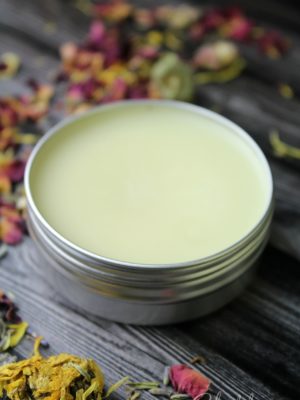
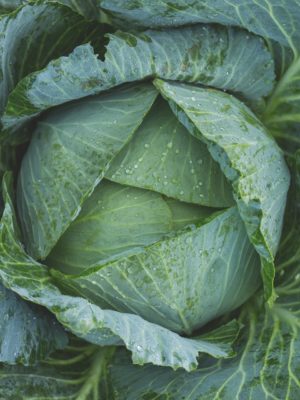

Can the whey from Milk Kefir be used?
Chris – I haven’t tried it personally. But.. I would think that it might not work – because whey is mostly protein. And the rice wash needs lactose (which is why we’re saturating it in milk). By using regular milk (which is rich in lactose) you won’t allow any other microbes to exist… just lactobacillus.
If you can’t get raw milk you can use pasteurized milk — I know that not everyone has access to raw milk. Here in my area we do but I’ve had friends overseas in the UK and in Canada use regular pasteurized milk with success too.
On another note.. if you have whey from milk kefir, it does make great sourdough (that’s what I use mine for!)
I have kefir and i would like a good sourdough receipt to use up my kefir. Can you please share it cqammaz@gmail.com Happy gardening from Pa.
I’ve used the whey from milk kefir with wonderful results! Try it!
would you share your experience with kefir whey? I use to make kefir milk and never use the whey for LAB serum. please wqrothe me at ariesoe@gmail.com. thanks
I made my rice wash and let sit from 12/23 – 12/28. Added 5% milk and today after 2 days (12/30) I already have the 2 layers of curds and whey. Should I still let it sit for 7 days?
That’s fast! It can depend on the temps where you are. In the summer here in Phoenix, mine happens fast too. I’d let it go another day or so and then call it done… it takes 7 days on average, but considering climate plays a relatively large part of that timeframe it can vary greatly by person. Hope that helps.. and sorry it took me so long to respond. The holidays threw everything off for me.
After adding sugar the mixture settled and theres now a white floating layer on top. Is this normal or should i remove it?
That is normal!
Glad to know! I will start diluting and using today! I wonder what dilution is good for spraying the mulch in my poultry run.
I had this happen also. But mine got real bubbly and had a vinegar smell, so I think it did a second ferment. I wasn’t sure what to do with it so I dumped it in the compost and started over. I’ll be using molasses this time. I have 2 questions:
1. If it second ferments what can it be used for?
2. Can the serum be kept in the refrigerator to prevent a second fermentation?
Thank you❤️
i’m using wash from faro and soymilk. Seems to be working. I think you can be quite liberal about the grain and type of milk? (Curds within a few days)
Will Sodium Benzonate hender lactose from forming if I use dark Karo syrup instead of molasses? Couldn’t find any at the store.
Oh gosh … I do not know how that would work. I haven’t tried that personally… so I wouldn’t be able to honestly tell you. Can you not find molasses where you are?
Mine went perfectly, but then got an layer of fungus on top. I think I waited to long. Just four or five days, but it,s warm at the moment. Can I still use the lab, or has that also gone bad?
You can likely still use it. I’m in Phoenix and it gets very warm here… my home runs 80-82 (sometimes more) so my LAB can quickly turn as well. Remove the fungus from the top and strain out the LAB underneath – it should be fine.
Got pink spots on my curd from 5/28 liquid part is clear. Should I toss it?
If the liquid is clear you are ok — the curds will look very funky, honestly (and smelly!) That is completely normal!
when it deluted like this (Dilution ration: 1/500 ~ or 2 Tablespoons per gallon) do we want to let it sit for about couple of days before we use it ?
You don’t need to let it sit out a couple of days, you can use right away. I hope that helps!
How many days will this diluted solution stay active without expired? I mean if we buy this diluted solution how long we can keep it active
Thank you for such an informative website & your easy to follow directions. I would like to print your directions for making lactobacillus & how to use the syrum. Do you have a printable version I could download? If it was on your website, I missed it.
Thanks again,
Susie
Susie, I’d be happy to email you a printable version. Reach out to me at rebootedmom@gmail.com and I’ll attach a printable version for you 🙂 Thank you for taking time to comment. I’m so glad you found the post helpful.
Could In also get printable version, please? smithandy200@gmail.com
Sure can. I’ll email one shortly.
Thank you for such an informative website & your easy to follow directions.
You are most welcome! Best wishes for a beautiful week ahead!
Thank you for this article, big thumbs up. Does one need to culture the rice water in the dark or can it stand outside?
You can do it in the dark, or outside – I wouldn’t do it outside in extreme temps though (too cold, or too hot).. I’d try to keep it at a constant temperature, nothing extraordinary. For me, being in Phoenix, it tends to be hot here so I did mine in the kitchen as the temp was 78-80 degrees F.
I’ve been wanting to start doing this but I’ve been trying to find recipes to turn the curds into cheese. We will be using fresh raw milk and I’d really like to make cheese instead of just feeding it to my chickens.
Do you have links to different things we can use the curds for-especially cheese?
Thank you so much😊
You are so lucky! I wish we had more raw milk.. it’s quite expensive where I am and I use it for so many things.
Aside from LAB Serum (which is great for your garden), if you have raw milk, you can turn it into handmade soap (if you search my site I have recipes for cold process soap…. lately I’ve been using 100% tallow to keep it simple), Halloumi cheese, Cottage Cheese, Kefir… Kefir Sourdough, regular aged cheese (I’ve got so many recipes on this site for all kinds of cheese)…. cheese curds, cotija cheese, and feta cheese (just search on my site for “cheese”). You can even freeze it and bag it in gallon bags for use later.
Thank you! What do you do if your serum goes through a 2nd ferment? Mine smelled like vinegar and would fizz like a soda.
I’m making a new batch so I’ll be using your cheese recipes!
Great information. I’d like to use as a starter for fish emulsion.
Hello. Thanks to this blog post I was finally able to make my first LAB and started using it in the garden as a foliar spray. I’d like to use it as a compost booster, so could you please tell me which dilution ratio to use to speed up decomposition? Thank you in advance!
Hi there Gaga… great job making your first LAB serum! I kept my serum in a huge gallon jar (covered) in the rear of my refrigerator. I just pulled it out when I needed it in the garden and in my bokashi I had going.
If you are using it as a compost booster, you should add 30ml per litre, and damp down every time you add to the pile or as you are layering up. The LAB will speed up the decomposition and start to cycle the nutrients in your compost.
Good luck – let me know how it works for you!